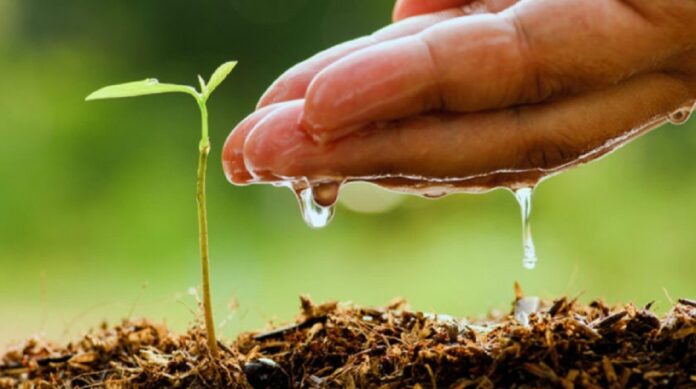With the unpredictability of rainfall, irrigation becomes the lifeline for growing crops. Selecting the right irrigation method or system is crucial for achieving optimum crop yields. Here’s how to make the right choice.
Selecting an irrigation method or system could be tricky. You must consider several factors before selecting a type of irrigation system. Choosing an irrigation method may vary due to location, type of crop and even the farmer. The factors to consider include; compatibility with other farm operations, economic feasibility, topography and soil properties, crop characteristics, and social constraints among others.
Factors to Consider in selecting an irrigation method or system
Now, let us look at the factors in more detail.
1. Compatibility with other farm operations
An irrigation system for crop fields must be designed and worked in a way that will not make other operations or the use of different equipment difficult or impossible. If you intend to use large mechanized equipment, you need a longer and wider field. Smaller equipment or animal-powered cultivating equipment is more suitable for small fields and more permanent irrigation facilities.
Read also: What if it doesn’t rain? 3 Absolutely Cheap Ways to Ensure Crops Get Enough Water
2. Economic feasibility
Selecting an irrigation method or system is an important economic decision. Some types of pressurized systems have high capital and operating costs but may use minimal labour and conserve water. Other systems are relatively less expensive to construct and operate but have high labour requirements. Some are limited by the type of soil or the topography of the field. Before you choose, consider the costs of maintenance and the expected life of the rehabilitation. Also consider costs like energy, water, depreciation, land preparation, maintenance, labour and taxes.
3. Topographical characteristics
One of the major factors affecting irrigation, especially surface irrigation, is topography. The slope of the field and its uniformity are the most important topographical factors. Surface irrigation systems require uniform terrane. More so, the location and elevation of the water supply relative to the field boundaries. Also, the area and configuration of the fields, access by roads, utility lines (gas, electricity, water, etc.), and migrating herds whether wild or domestic.
4. Soil properties
Consider the moisture-holding capacity of the soil, the intake rate and depth. These are major criteria in selecting an irrigation method. Sandy soils have higher intake rates and lower soil moisture storage capacities than clayey soils. This means fields with sandy soils may require an entirely different irrigation method than deep clayey soils. Sandy soil requires more frequent, smaller applications of water whereas clay soils can be irrigated less frequently and to a larger depth.
Read also: Remarkably Using Little to Produce More Crops By Increasing Water Use Efficiency
5. Water supply
Another factor that can determine the irrigation practice is the quality and quantity of water. Water demands by crops are continuous during the growing season. A water supply with a relatively small discharge is best utilized in an irrigation system which incorporates frequent applications. The factor of water quality affects decisions similarly. A poor-quality water (without plant nutrients) supply must be applied more frequently and in larger amounts than one with good quality.
6. Crop characteristics
Irrigation systems create different environmental conditions such as humidity, temperature, and soil aeration. The yields of many crops may be as much affected by how water is applied as the quantity delivered. Some crops have high economic value and allow the application of more capital-intensive practices. Deep-rooted crops are more amenable to low-frequency, high-application rate systems than shallow-rooted crops.
7. Social influences
In some cases, irrigation goes beyond an individual venture to a community enterprise. In this case, there are three levels of community organization. There are individuals or small informal groups of individuals participating in the system at the field and tertiary level of conveyance and distribution.
Irrigation system designers should be aware that perhaps the most important goal of the irrigation community at all levels is the assurance of equity among its members. Thus the operation, if not always the structure, of the irrigation system will tend to mirror the community view of sharing and allocation.
Irrigation often means a technological intervention in the agricultural system even if irrigation has been practiced locally for generations. New technologies mean new operation and maintenance practices. If the community is not sufficiently adaptable to change, some irrigation systems will not succeed.
8. External influences
In selecting irrigation methods, conditions outside the sphere of agriculture may affect and even dictate the type of system selected. For example, national policies regarding foreign exchange, strengthening specific sectors of the local economy, or sufficiency in particular industries may lead to specific irrigation systems being utilized. Key components in the manufacture or importation of system elements may not be available or cannot be efficiently serviced. Since many irrigation projects are financed by outside donors and lenders, specific system configurations may be precluded because of international policies and attitudes.
Read also: 5 Types of Irrigation, Why they are Critical to the Success of Your Crops
Summary
The factors that affect selecting irrigation methods or systems at the farm level are not exhaustive. The designer, evaluator, or manager of irrigation systems should be aware of the broader setting in which irrigated agriculture functions. Ignorance of these factors and more may lead to failure of the system.
Reference
The practice of irrigation – FAO


